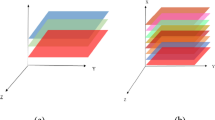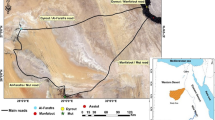Abstract
Remote Sensing image fusion is an effective way to use the large volume of data from multi-source images. This paper introduces a new method of remote sensing image fusion based on support vector machine (SVM), using high spatial resolution data SPIN-2 and multi-spectral remote sensing data SPOT-4. Firstly, the new method is established by building a model of remote sensing image fusion based on SVM. Then by using SPIN-2 data and SPOT-4 data, image classification fusion is tested. Finally, an evaluation of the fusion result is made in two ways. 1) From subjectivity assessment, the spatial resolution of the fused image is improved compared to the SPOT-4. And it is clearly that the texture of the fused image is distinctive. 2) From quantitative analysis, the effect of classification fusion is better. As a whole, the result shows that the accuracy of image fusion based on SVM is high and the SVM algorithm can be recommended for application in remote sensing image fusion processes.
Similar content being viewed by others
References
BARZILAY O, BRAILOVSKY V L, 1999. On domain knowledge and feature selection using a support vector machine[J]. Pattern Recognition Letters, 20(5): 475–484.
BURGES C J C, 1998, A tutorial on support vector machines for pattern recognition [J]. Data Mining and Knowledge Discovery, 2(2): 955–974.
CHAPELLE O, HAFFNER P, VAPNIK V N, 1999. Support vector machines for histogram-based image classification [J]. IEEE Trans. On Neural Networks, 10 (5): 1055–1064.
CORTES C, VAPNIK V, 1995. Support vector networks[J]. Machine Learning, 20: 273–297.
FANG Yong, 2000. The research of data fusion from multiple sources by evidential reasoning [J]. Journal of Remote Sensing, 4(2): 106–111 (in Chinese).
HE Guo-jin, 1999. Review of wavelet transform applied to remote sensing image processing [J]. Remote Sensing Information, 1: 14–17 (in Chinese).
JIA Yong-hong, LI De-ren, SUN Jia-bing, LIU Ji-lin, 1998. Comparison of IHS transformation for integrating SAR and TM images[J]. Journal of Remote Sensing, 2(2): 103–106. (in Chinese)
LI Jun, ZHOU Yue-qin, LI De-ren et al., 1999. Fusion of high-resolution panchromatic and multispectral images by using wavelet transform[J]. Journal of Remote Sensing, 3(2): 116–121. (in Chinese).
LIU Chun-ping et al., 2001, “Multi-source remote sensing data fusion using fuzzy self-organization mapping network and modified dempster-shafer evidential reasoning method to classification” [C]. In: The Second International Conference of Multi-spectral Image Processing & Pattern Recognition of SPIE. Central China University of Science and Technology, 4556: 71–79.
POHL C et al., 1998. Multi-Sensor image fusion in remote sensing: concepts, methods and applications[J]. International Journal of Remote Sensing, 19(5): 823–854.
SCHOLKOPF B, MIKA S, BURGES C J C et al., 1999. Input space versus feature space in Kernel-based methods[J]. IEEE Transactions on Neural Networks, 10(55): 1000–1017.
SUN Jia-bing, LIU Ji-lin, LI Jun, 1998. Multi-source remote sensing image data fusion [J]. Journal of Remote Sensing, 2(1): 47–50. (in Chinese)
VAPNIK V N, 1995. The Nature of Statistical Learning Theory[M]. Springerberlag, New York.
WALD L, RANCHIN T, MANGOLINI M, 1997. Fusion of satellite images of different spatial resolutions: assessing the quality of resulting Images [J]. PE & RS, 63(3): 691–699.
WANG Zhi-jun, LI De-ren, LI Qing-quan, 2001. Wavelet theory based Ikonos panchromatic and multi-spectral image fusion[J]. Acta Geodaetica et Cartographica Sinica, 30(2): 112–116. (in Chinese)
ZHANG Xue-gong, 2000. The Nature of Statistical Learning Theory[M]. Beijing: Tsinghua University Press. (in Chinese)
ZHU Guo-bin, BLUMBERG D G, 2002. Classification using ASTER data and SVM algorithms: The case study of Beer Sheva, Israel[J]. Remote Sensing of Environment, 80(1): 233–240.
Author information
Authors and Affiliations
Additional information
Foundation item: Under the auspices of the National Natural Science Foundation of China (No. 40171015).
Biography: ZHAO Shu-he (1971 -), male, a native of Shandong, Ph. D. His main research interests include information extraction of high spatial resolution remote sensing data, data fusion of multi-source remote sensing.
Rights and permissions
About this article
Cite this article
Zhao, Sh., Xue-zhi, F., Kang, Gd. et al. Multi-source remote sensing image fusion based on support vector machine. Chin. Geograph.Sc. 12, 244–248 (2002). https://doi.org/10.1007/s11769-002-0009-9
Received:
Issue Date:
DOI: https://doi.org/10.1007/s11769-002-0009-9




